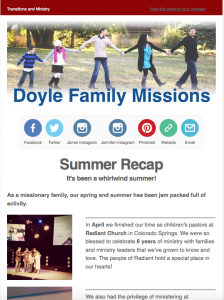 It Starts When They Walk In…
It Starts When They Walk In…
For this portion of the series, I want to focus on getting the Children’s Church experience started…
…Before you can start the 5 minute countdown, make a grandiose announcement, send in a crazy character, start your Bible on fire, or eat donuts suspended from a rope, we need some kids to come thru the doors. If the kids don’t show up, you’d be starting your Bible on fire for, well… nobody.
But what can you do to keep kids from getting bored from the moment they come into your ministry area?
Engage Them… Here Are a Few Suggestions:
- Decor- Have your ministry room(s) decorated to reflect the theme of your ministry or the topic that you are teaching. Whether you have the ability, permission and money to deck-out an area for kids or you have to set it up and tear it down; kids know when they are being welcomed and if you’ve prepared for them. Banners, backdrops, balloons, props/scenery and murals will create an environment that kids will remember.
- Ambiance- Music that is upbeat and fun or anticipatory will help kids feel like this is the place just for them. Light up the room(s) with different colors to help accent and compliment the look of the room. Video clips that are familiar or interesting to kids will make a welcoming experience. AND FOR GOODNESS SAKE – clean up the clutter, vacuum, adjust the temp and eliminate odor!
- Activities- When kids enter any new environment, their internal intensity changes. Kids need an outlet for energy. So have some energy-outlet friendly stuff ready. Board games, twister, an art station, simple “carnival”-type games, long-jump contests, high-jump contests, follow the leader, quiz games, treasure/scavenger hunts, video games… Use your imagination. I mean, look at it as if “nothing kid-friendly is off-limits”.
- Relational Interaction- Having the leaders in your areas who are initiating interaction will create a memory and set the temperature for an experience. What do the leaders do? Ask kid-related questions; about their clothes, school, shoes, movies, video games, toys, pets, vacation, friends, etc. Having some conversation starters are important. Read my post about “The Stuff I’ve Kept in my Pockets” These little items will help leaders start conversations and create experiences.
Have I given you something to think about? BTW: You can buy a Bible that starts on fire here… I use mine all the time!


 Rules are not a fun subject – but I believe they are necessary!
Rules are not a fun subject – but I believe they are necessary!


 I still believe that one of the best ways to minister to children is with the “Children’s Church” model.
I still believe that one of the best ways to minister to children is with the “Children’s Church” model.



